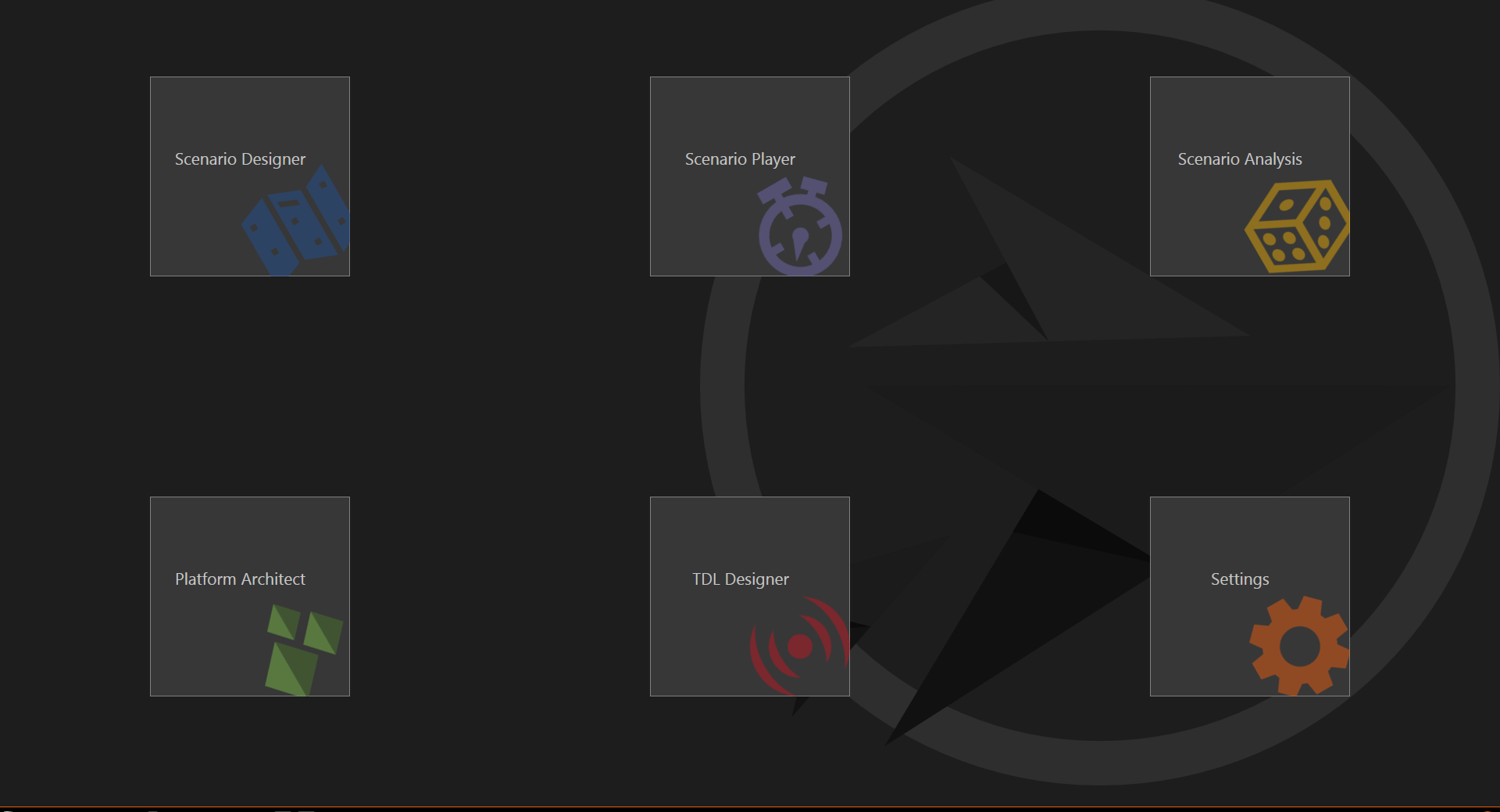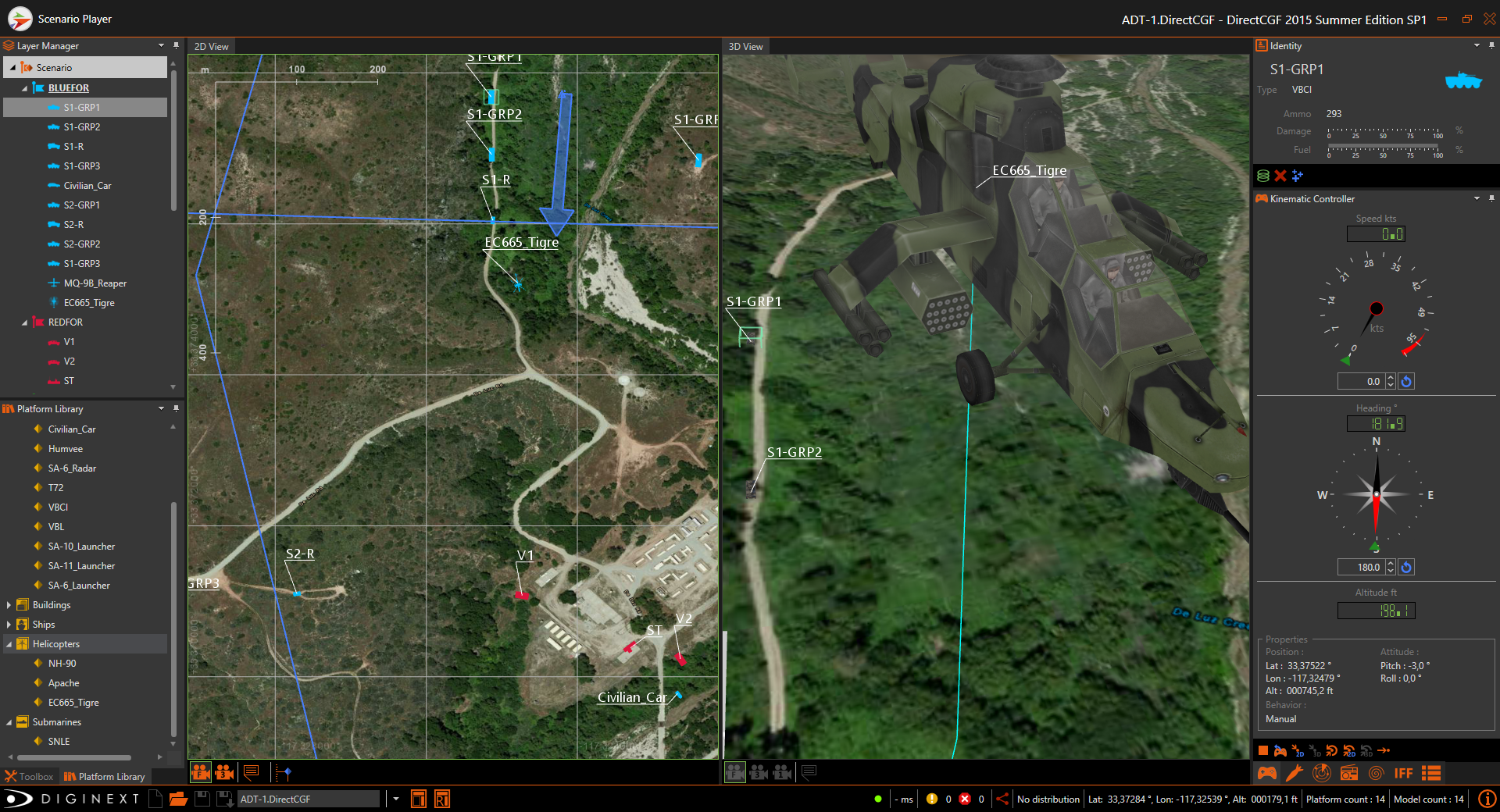Battlelab

Based on its range of products in the field of Tactical Data Link and Simulation and supported by an proven methodology, DIGINEXT proposes the Tactical Battlelab concept consisting of interoperable and reliable simulation software solution answering today’s armed forces requirements for testing NATO or National tactical data links (TDL) systems interoperability and compliance with international standards (STANAG and MIL-STD). DIGINEXT’s simulation and testing tools are considered as the golden standard in NATO countries and defence industry offering a network-centric environment to share complex data in mission critical situations.
DIGINEXT has developed a wide range of modelling, simulation and testing systems required to run CONOPS and defence systems definition, mission rehearsal and analysis before deployment of Forces
Applications
- National & platform’s CONOPS / IERs
- Definition and design of National Tactical Data Link
- Armed force capacity gaps & needs against new threats
- SOPs, TTPs
- New host tactical data exchange impact (J11.x NEW, J16.0 …)
Specify, prototype & implement systems
- Capabilities, TDL transactions & ergonomics
- Education & learning
- Live, virtual & constructive training
- Full Combat Ready training
- Joint Warfare Centre
Plan & validate operational readiness prior to deployments
- Mission / TDL network design suitability / TDL I/O
Key advantages
- High fidelity theater deployment
- Complex network validation
- New system IO testing
- Concept of operations studies
- Future system modeling
- Feeding Lessons Learned Cell
Analyze After Action to feed lessons learned cell with:
- Bug and IOI analysis
- Submit common plan adaptation
- Suggest new unit positioning
- Edit restrictions for ops users
- Update education courses
DirectCGF : Breakthrough Computer Generated Forces

DirectCGF (http://www.directcgf.com/) is the unique Network Centric simulation COTS providing the dual capabilities to be used into virtual and live environment. DirectCGF is a cost-effective simulation software for creating, configuring and running tactical scenarios involving various kind of interacting and cooperating platforms. Platforms represent simulated entities and are composed of numerical models that describe their capabilities, equipments and behaviors. DirectCGF is shipped with more than forty different platforms including aircrafts, helicopters, ground vehicles, ships and missiles.


Applications
- Air Traffic Control
- Visual Simulation
- Battlelab experimentation (CONOPS
- Facilities and Homeland Security
- Network-centric operations
- Embedded Training
Key advantages
- High-fidelity battlespace environment generation and sharing
- New need to simulate System of Systems (NEC) operations
- New need for I/O with operational systems (TDL)
- Fine models for entities (communications, sensors, weapons, jammers…), objects, areas, behaviors & transactions
- Allow design & integration of 3rd party models
- Distribution through DIS, HLA, TDL, SIMPLE communication protocols
- Strong manning saver during game animation thanks to automatic or pre-scripted opposing forces reaction
- Blue forces reacting on TDL control order in accordance typical ROEs
- Natively designed to be a node
NETX L16/L22
All data messages generated by a position, are computed by the NETX software before being distributed to all other positions (or one other position in case of an addressed message) according to rules and radio terminal capabilities.
The NETX embedded distribution is processed in accordance with the network design, the radio terminal features, the coverage capability (LOS, terrain intervisibility) and special events added by the operator.
Applications
- JICO operators training
- CONOPS study under National Tactical Data Links definition
- Validation of ground based L16/L22 network design
Key advantages
- Interconnection with NILE Reference System (NRS) components to provide high fidelity network behavior to Simulated Units
- Network regulation: bandwidth, time slots usage, terminal transmission queue simulation, message packing
- Network connectivity: implementation of dynamic Line of Sight limitations (terrain model)
- Network Management events : test messages, time slot modification
- Monitoring JU and Network Activity
- Initialization of load file validation process
- Network design import
- PPLI generation
- Receipt/Compliance
- Relaying
- MIDS ICD, SIMPLE, JREAP, SNC interfaces
- Compliance with SIMPLE protocol (STANAG 5602)
- All communications are performed on Ethernet TCP/IP connections
